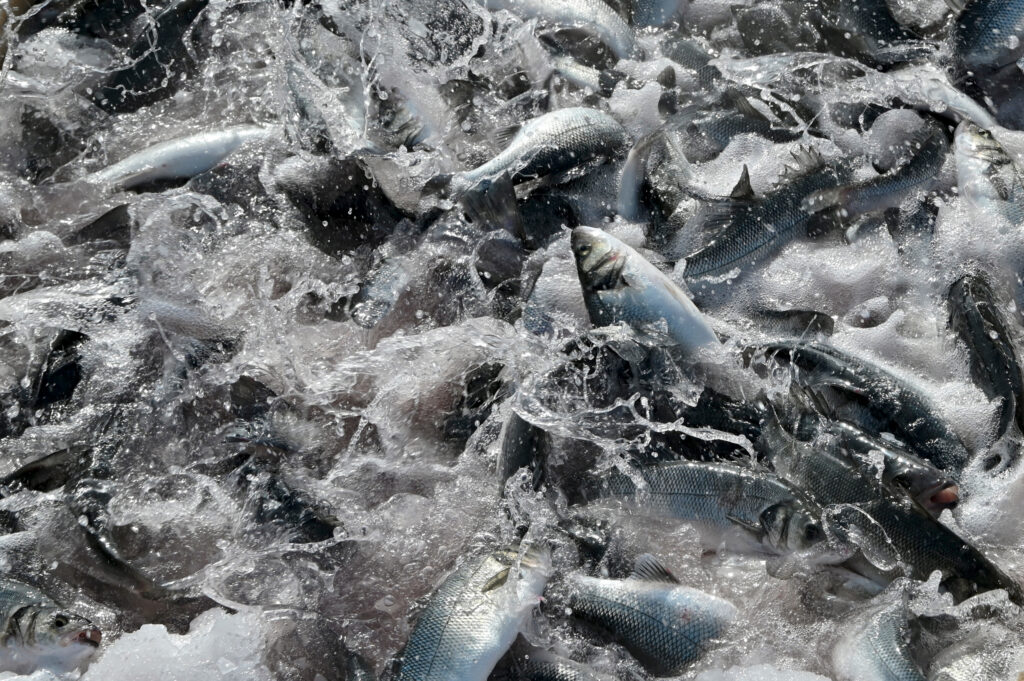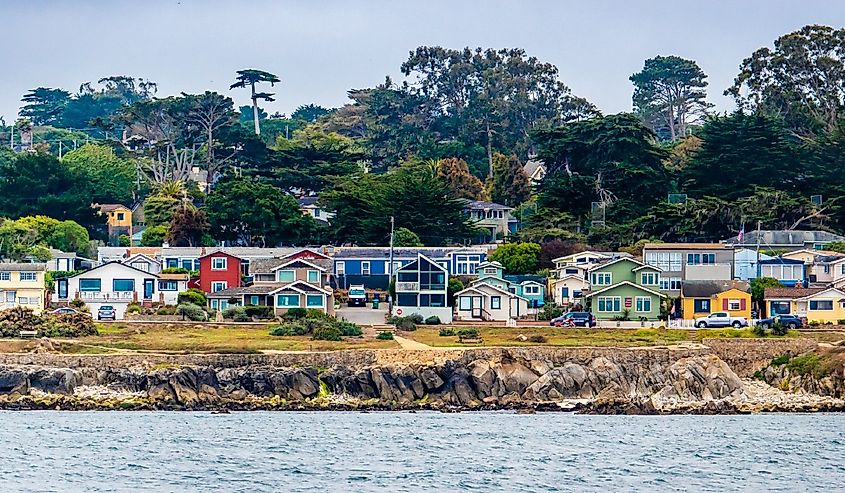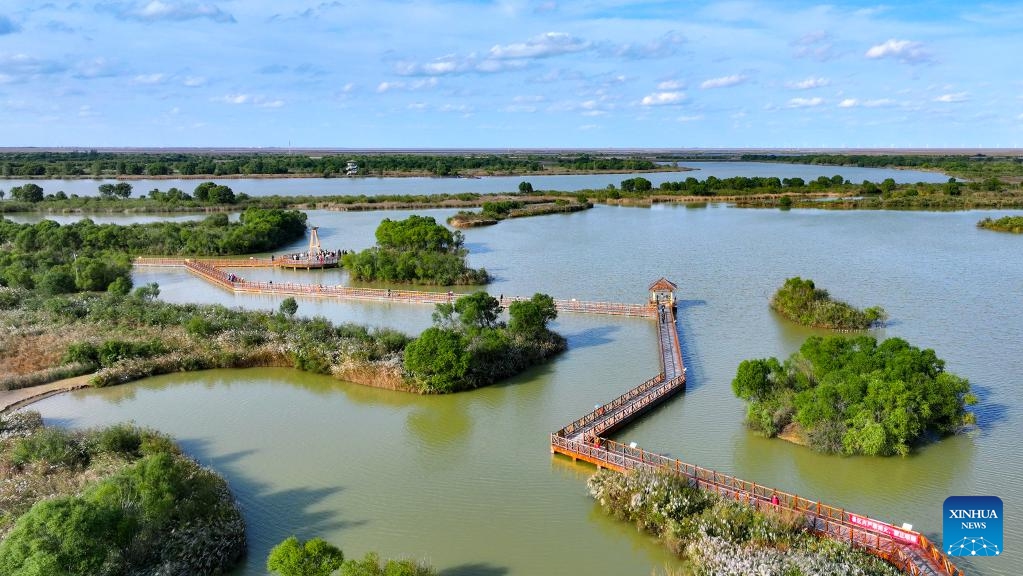Rising to the Challenge: Meeting the EAT-Lancet Commission’s Recommendation to Sustainably Increase Seafood Consumption – Oceana | Protecting the World’s Oceans

Analysis of the EAT-Lancet Commission Report on Sustainable Diets and Ocean Resources
Introduction: Aligning Global Food Systems with Sustainable Development Goals
The EAT-Lancet Commission’s report presents a scientific framework for transforming the global food system to support the 2030 Agenda for Sustainable Development. The proposed “planetary health diet” is designed to ensure global food security and enhance human health, thereby directly addressing Sustainable Development Goal 2 (Zero Hunger) and SDG 3 (Good Health and Well-being). This dietary model also provides a pathway for achieving SDG 12 (Responsible Consumption and Production) by outlining sustainable consumption patterns on a global scale.
The Role of Seafood in Achieving SDG 2 and SDG 3
A central recommendation of the report is a significant dietary shift that includes a substantial increase in the consumption of aquatic foods. The commission specifies a required global increase of more than 100% in the consumption of fish and shellfish. This transition is identified as a critical strategy for advancing key Sustainable Development Goals:
- SDG 3 (Good Health and Well-being): Increased seafood consumption provides populations with essential nutrients, including omega-3 fatty acids, vitamins, and minerals, which are vital for preventing malnutrition and promoting positive health outcomes.
- SDG 2 (Zero Hunger): As a highly nutritious protein source, sustainably harvested seafood can enhance food security and provide essential nourishment for a growing global population, projected to reach 10 billion by 2050.
Sustainable Fisheries Management: A Prerequisite for SDG 14
The viability of this dietary recommendation is contingent upon the robust and sustainable management of global fisheries, a primary target of SDG 14 (Life Below Water). Meeting the projected increase in demand requires a global commitment to ending unsustainable practices and rebuilding marine ecosystems. Key actions necessary to align fisheries with SDG 14 include:
- The establishment and enforcement of science-based catch limits to end overfishing and allow depleted stocks to recover.
- The implementation of measures to minimize bycatch and eliminate destructive and wasteful fishing practices.
- The protection and restoration of essential marine habitats that support fish populations and overall ocean health.
Effective implementation of these management principles could significantly increase the global wild fish catch, sustainably providing a healthy seafood meal to hundreds of millions more people.
Seafood as a Low-Carbon Protein: Contribution to SDG 13
Wild-caught seafood is a low-impact protein source relative to many land-based animal proteins, making it a vital component in strategies to mitigate climate change in line with SDG 13 (Climate Action). Shifting consumption from high-carbon proteins to sustainable seafood offers significant environmental advantages:
- Lower greenhouse gas emissions per gram of protein compared to ruminant livestock production.
- Reduced pressure on land resources, mitigating deforestation driven by agricultural expansion.
- Less demand on freshwater resources compared to land-based agriculture.
Policy Imperatives for SDG Attainment
The EAT-Lancet report establishes a clear policy imperative for governments, particularly the small number of countries responsible for the majority of the world’s wild fish catch. The achievement of a healthy and sustainable global food system is dependent on immediate and decisive policy reforms in fisheries management. The successful implementation of such policies is fundamental to advancing not only SDG 14 but also the deeply interconnected goals of zero hunger (SDG 2), good health (SDG 3), responsible consumption (SDG 12), and climate action (SDG 13) as part of the comprehensive 2030 Agenda.
1. Which SDGs are addressed or connected to the issues highlighted in the article?
Analysis of Relevant SDGs
- SDG 2: Zero Hunger: The article’s focus on the EAT-Lancet Commission’s recommendations directly connects to SDG 2. The commission’s goal is to establish a global food system that can feed a growing population a healthy and nutritious diet. The article likely discusses how sustainably sourced seafood can play a crucial role in achieving food security and improved nutrition, particularly in providing essential proteins and micronutrients.
- SDG 3: Good Health and Well-being: By promoting the EAT-Lancet diet, which is designed to prevent diet-related non-communicable diseases and improve overall health, the article addresses SDG 3. The shift towards a diet rich in sustainably harvested fish, as advocated by the commission, is presented as a pathway to better health outcomes for the global population.
- SDG 12: Responsible Consumption and Production: This goal is central to the article’s theme. The discussion revolves around shifting global consumption patterns towards more sustainable options (the EAT-Lancet diet) and ensuring that the production methods, specifically fishing, are managed responsibly to avoid depleting natural resources. The article emphasizes the need for sustainable production to meet the increased demand for seafood recommended by the diet.
- SDG 14: Life Below Water: As a press release from Oceana, this goal is a primary focus. The article connects the dietary recommendations to their impact on marine ecosystems. It argues that meeting the increased demand for fish must be done without causing further harm to the oceans, highlighting the critical need to end overfishing, rebuild fish populations, and manage marine resources sustainably.
2. What specific targets under those SDGs can be identified based on the article’s content?
Identified SDG Targets
- SDG 2: Zero Hunger
- Target 2.1: By 2030, end hunger and ensure access by all people, in particular the poor and people in vulnerable situations, including infants, to safe, nutritious and sufficient food all year round. The article supports this by advocating for a food system, including sustainable fisheries, that can provide nutritious food for the global population.
- SDG 3: Good Health and Well-being
- Target 3.4: By 2030, reduce by one third premature mortality from non-communicable diseases through prevention and treatment and promote mental health and well-being. The article links the adoption of the EAT-Lancet diet, with its emphasis on fish over red meat, to the prevention of such diseases.
- SDG 12: Responsible Consumption and Production
- Target 12.2: By 2030, achieve the sustainable management and efficient use of natural resources. The article directly addresses this by calling for the sustainable management of global fish stocks to meet dietary needs without causing ecological collapse.
- SDG 14: Life Below Water
- Target 14.2: By 2020, sustainably manage and protect marine and coastal ecosystems to avoid significant adverse impacts, including by strengthening their resilience, and take action for their restoration in order to achieve healthy and productive oceans. The article’s core message from Oceana is the necessity of protecting marine ecosystems while sourcing food.
- Target 14.4: By 2020, effectively regulate harvesting and end overfishing, illegal, unreported and unregulated fishing and destructive fishing practices and implement science-based management plans, in order to restore fish stocks in the shortest time feasible, at least to levels that can produce maximum sustainable yield as determined by their biological characteristics. This is the most specific and critical target, as the article would insist that meeting the EAT-Lancet recommendations is contingent on ending overfishing and restoring fish populations through science-based management.
3. Are there any indicators mentioned or implied in the article that can be used to measure progress towards the identified targets?
Implied Indicators for Measurement
- Indicator 14.4.1: Proportion of fish stocks within biologically sustainable levels. This is the most direct indicator implied in the article. Oceana’s advocacy for meeting dietary needs through sustainable fishing hinges on monitoring and increasing the percentage of fish stocks that are not overfished. The article’s discussion of ending overfishing and restoring populations points directly to this metric as a key measure of success.
- Indicator 2.1.2: Prevalence of moderate or severe food insecurity in the population. While not explicitly stated, this indicator is implied. The article’s premise is that a reformed global food system, including sustainable seafood, is necessary to provide nutritious food for all. Progress in implementing such a system would be measured by a reduction in food insecurity.
- Indicator 14.2.1: Proportion of national exclusive economic zones managed using ecosystem-based approaches. The call to sustainably manage and protect marine ecosystems implies the need for comprehensive management plans. This indicator measures the extent to which countries are adopting such approaches, which is a prerequisite for the long-term health and productivity of oceans as discussed in the article.
4. Table of SDGs, Targets, and Indicators
| SDGs | Targets | Indicators |
|---|---|---|
| SDG 2: Zero Hunger | 2.1: Ensure access to safe, nutritious and sufficient food for all. | 2.1.2: Prevalence of moderate or severe food insecurity in the population. |
| SDG 3: Good Health and Well-being | 3.4: Reduce premature mortality from non-communicable diseases. | (Implied) National statistics on diet-related non-communicable diseases. |
| SDG 12: Responsible Consumption and Production | 12.2: Achieve the sustainable management and efficient use of natural resources. | (Implied) Data on sustainable sourcing of seafood and consumption patterns. |
| SDG 14: Life Below Water | 14.2: Sustainably manage and protect marine and coastal ecosystems. | 14.2.1: Proportion of national exclusive economic zones managed using ecosystem-based approaches. |
| 14.4: End overfishing, illegal, unreported and unregulated fishing. | 14.4.1: Proportion of fish stocks within biologically sustainable levels. |
Source: oceana.org
What is Your Reaction?
 Like
0
Like
0
 Dislike
0
Dislike
0
 Love
0
Love
0
 Funny
0
Funny
0
 Angry
0
Angry
0
 Sad
0
Sad
0
 Wow
0
Wow
0



















































.jpg.webp?itok=0ZsAnae9#)


























